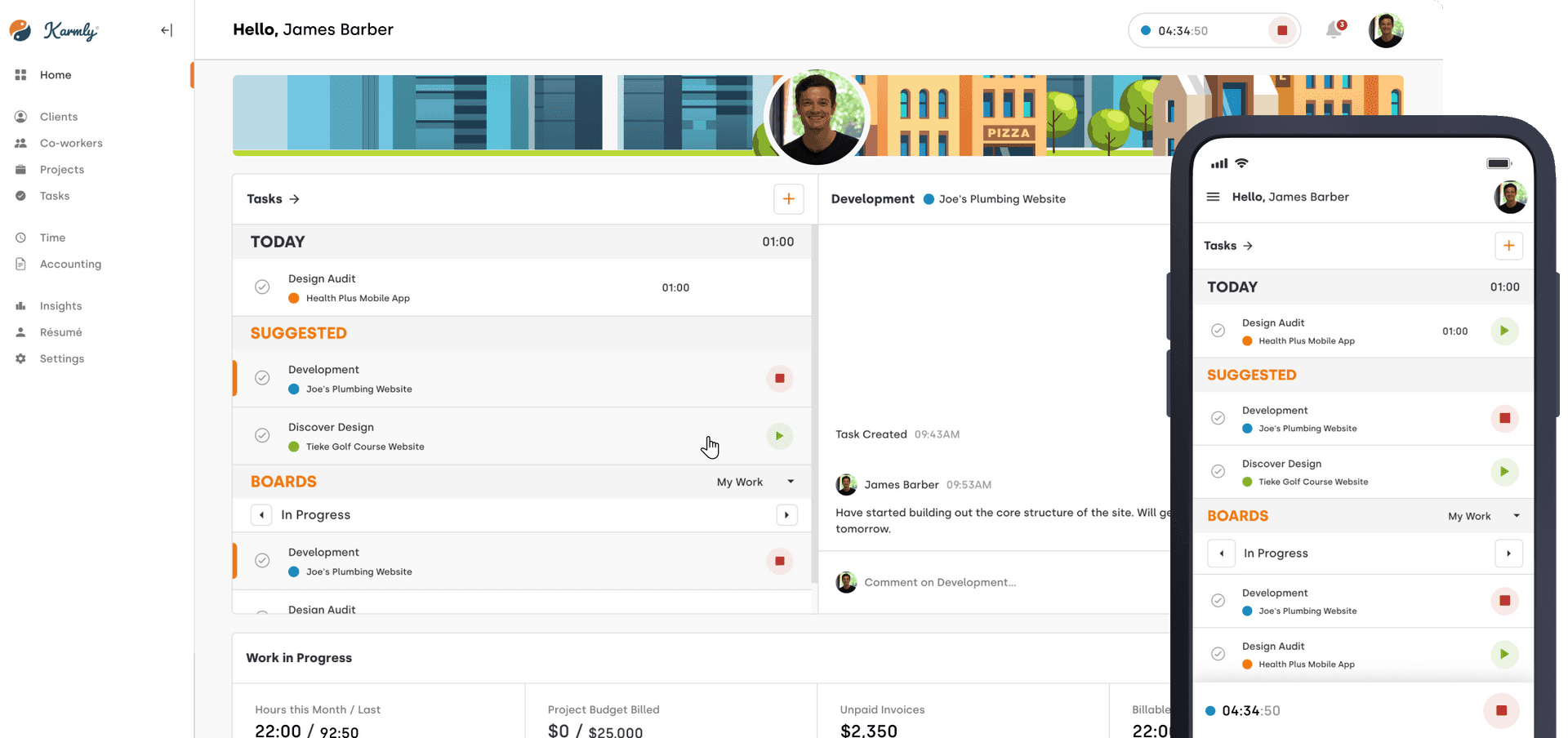William Barber didn’t set out to be a web developer, but that’s where his freelance business landed. He initially studied a Bachelor of Design at Victoria University, and then completed a three-year placement at the Garage Project as its in-house digital producer. In his third year working there he started to freelance on the side, and realised there was a demand for what he offered. A radical decision to buy a campervan and travel worked in well with a freelancing business model, and William’s been working full-time as a web developer ever since.
Find where your potential clients are
In the first few years, William worked directly with retailers, most often Shopify store owners who found him via word-of-mouth. He then began working with an agency, and found it an easier process with the agency handling the client side so he could focus on doing the actual work. Reaching out to agencies is a core way William secures work, and some of these partnerships have provided work over several years.
One of the other channels William uses to gain clients is the freelance platform Unicorn Factory, where he’s one of the original members. As well as direct leads, which fluctuate in demand, there’s the job board which can be a lucrative resource especially when work slows down.
A downturn in work means William goes into cold calling mode, putting his name out there more, sharing his website and also directing people to Shopify websites he’s developed. As is natural when working in a freelance capacity, William’s conscious of his workload and its variable nature. Until now, the workload has been consistent, with times of being barely able to stay on top of the work thanks to agencies funnelling the work through. With life circumstances changing 18 months ago, there was the need to slow everything down, so Willian’s rebuilding his workflow again this year.
“There’s a sort of blind faith that I can get back to how it was before. I’m also looking to move for a retainer model for some clients, so I can lock in a set number of hours a week. I’m trying to find a balance between having guaranteed hours and then playing the freelance game as well.”
The importance of project scope
William was taught a tough lesson by his first project, a full website overhaul of 30 000 products, that proceeded under a contra deal with no documented scope.
“It was a useful, yet horrible, first job where I learned what not to do. It was the worst possible outcome in terms of the relationship, but I did learn so much about how to structure projects going forward, how to set project scope, how to avoid blowouts in time and budget, and how to protect myself.”
William learnt first-hand that gentleman’s agreements are not worth anything when you’re talking business. “You can meet someone and they’re amazing but sometimes, once the project is underway and money is involved, everything changes. I’ve learned to be really clear about expectations, even if it costs me time and effort upfront because it means in the long term that the project is going to be clearer and easier to manage.”
It’s sometimes a bit tricky to balance the time put into defining a detailed scope at the onset of a project with the actual project work. For example, if a project is ten hours of work, it’s not sensible to invest two hours working on its scope, especially as working on the project scope is not usually charged to the client.
William creates a bulletproof scope, and also defines what’s out of scope. This means detailing what’s included up to a set point, and stating that whatever tasks follow beyond that point are charged an additional hourly rate.
It’s particularly important to be wary of smaller projects, he says. “There’s a minimum threshold of communication you need with a client to get a job over the line. Usually, you need to communicate at least four or five times, with several revisions.”
His process involves meeting the potential client, and then putting together a scope document with all tasks detailed at a granular level. “The clearer you are breaking the work down into tasks, the more protected you are from any misunderstandings on what the project includes.”
The fixed fee vs hourly rate conundrum
Creating project scopes has become easier over time for William, due to his expertise and specialisation. He’s also refined his billing process, settling on an agency rate and a direct rate. Agency work generally involves bigger projects and more guaranteed work, and direct rates reflect the added tasks involved in managing a project from initial scope development to completion.
“It takes experience to know what you’re worth and the sort of work you’re willing to do. You want to scare off the people who are just trying to get a bargain—and I don’t really want those types of jobs anymore. If I dropped my rate and hit up all the agencies, I would be swamped with work, but that’s not the sort of compromise I want to make.”
A balance between productivity and flexibility
A flexible approach to the working week is what suits William best at the moment. “I usually schedule meetings on Thursday and Friday for the following week, so I have a good idea on a Monday what I’ve got on for the rest of the week. But it’s really fluid, and depends on what I’m working on.”
A typical day could consist of a meeting, and then continuing to work on that client’s project, blocking out a whole day to work on a longer-term project, or working a few hours on several smaller Shopify projects.
William’s communication channel of choice for workshopping is face-to-face, and for everything else, the Google suite. While he’s tried all the productivity platforms, he finds that email and spreadsheets work best. “I find that when I’m working with multiple people and agencies, they all have their own platforms, so I end up extracting information and not knowing where anything is. If the content is in an email and spreadsheets, then it’s right there and everyone knows how to use it.”
In the past, William says he’s tried taking on a project manager role for his larger projects, working with backend and frontend developers, a designer, and a copywriter. But for now, he finds being a specialist is a ‘cleaner’ way of working, referring others in his network to his clients for other roles.
And when motivation fails to strike, William’s found the best way to counter it is to go with the flow—and coffee.
“I’ve got a pretty good sense of when I’m going to be productive and when I’m not. I’ve learned not to force it. But then you also need to make up those hours.”
Again, this is where the flexibility works for William. “Sometimes my most productive work is done after dinner from seven until ten, and sometimes those three hours are weirdly productive. Or I’ll get up early and try to get a few hours done before eight o’clock. It’s about managing your time.”
Define success in your own way
Monthly targets are one measure of success for William; they help him to determine the survival of the business and ensure that he can pay the mortgage.
But perhaps as important, if not more important, to William, is the work-life balance that his business affords him. “Lifestyle is more important to me than profit. I can work the odd late night if I have half a day on the other side.”
Freelancing relies on your talent, and to grow this means going outside your comfort zone. “Freelancing is all about improvisation and adapting. You need to learn a range of skills first rather than pitching yourself to the market as a specialist,” says William.
Some people are way too selective early on, he says, trying to be a specialist, when in fact it takes time to determine where your talent lies. “If you’re not sure what your best skill is then take on all different types of work, challenge yourself, and find out."
You can find William at Barber.Codes.

